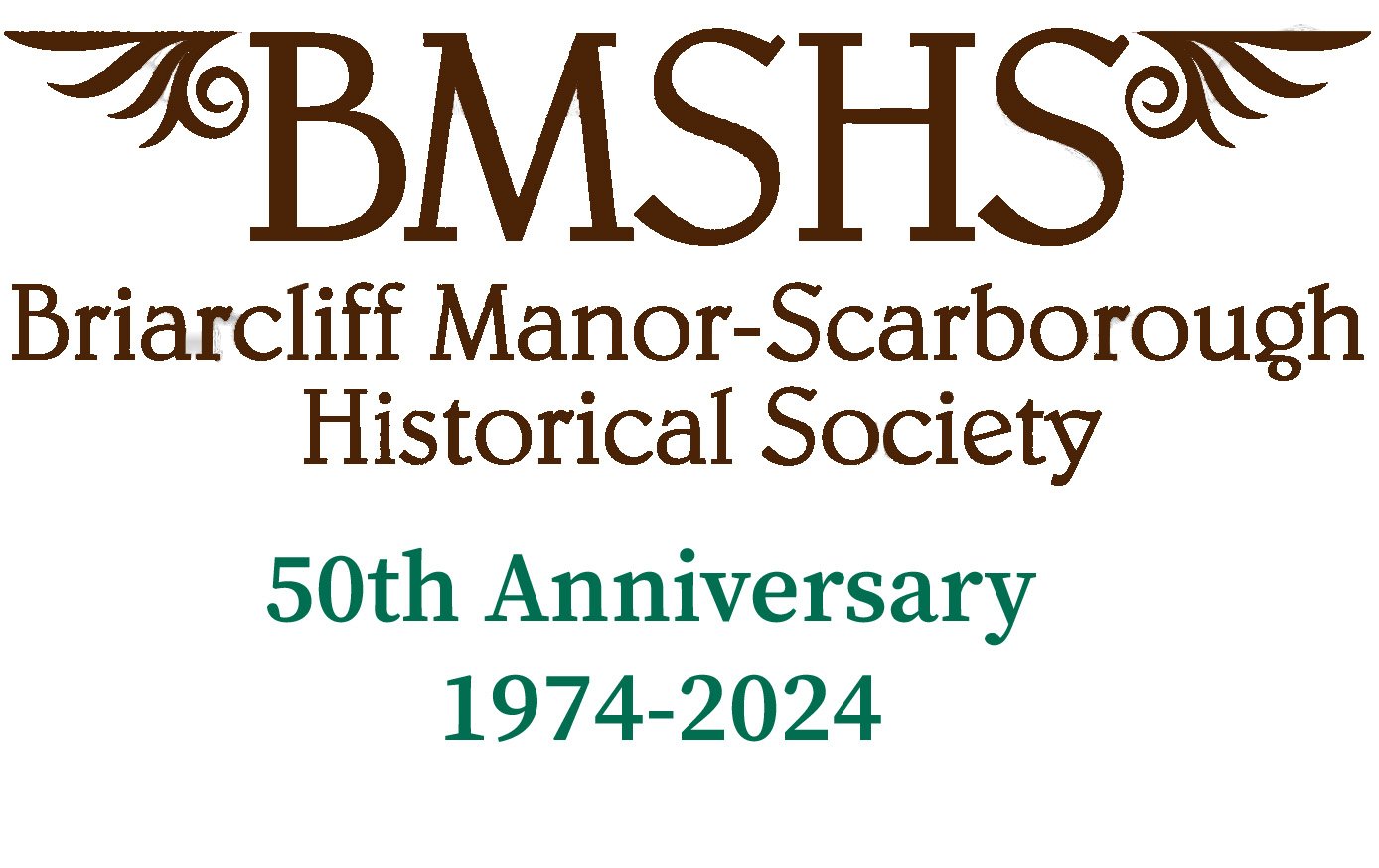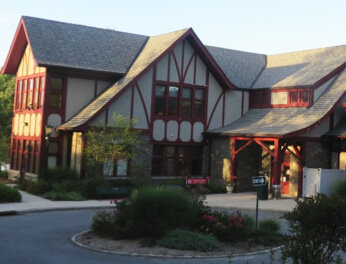The Briarcliff Library - Notebook Vol. 2018-5
By Bob Fetonti, BMSHS Trustee
Libraries are thought of as peaceful quiet places and while that is true of our library today, it has had an adventurous past involving several moves and even some drama. Regardless of where it has been located, it has always provided, in the words of one library volunteer, “the personal touch with big libraries don’t have. Knowing most of the readers and what they like makes working in the library more friendly.”(1)
Figure 1. Briarcliff Community Club BMSHS Collection
The Briarcliff Library was started in 1914 by the Briarcliff Manor Community Club which was organized to conduct lectures, hold theatrical performances and meetings of literary, political and religious societies. According to the 1914 issue of “Community Notes” published by the club “The library is open for the lending of books. So far six cards have been taken out.”(2) The library was funded from the dues of the community club and depended on donations from members and the Sunday school for books. It was open to all residents, but until 1921, did not have regular hours or a librarian. That year, Mrs. A. G. Bookwalter organized renewed community support for the failing library and a part-time librarian, Miss Louise Miller, was hired. In 1924, the village began allocating funds for the library. In 1928, the library was forced to move when the Community Club building, a converted school house, was sold to the Westchester Parkway Commission. The site is now at the point where the north bound entrance lane enters Route 9A from Pleasantville Road.
From 1928 to 1930 the library was temporarily housed in the tower room of the Briarcliff Realty Company and world famous Briarcliff Dairy owned by Walter Law. This building at 1360 Pleasantville Road is now the home of Operating Engineers Local 357. The library now had a full-time librarian, Mrs. Roscoe Hersey, mother of author John Hersey. The library’s collection was now over 4,000 volumes and it had regular hours. It needed more space.
In 1930 the library was given another temporary home on the main floor of the High School wing of the public school located at the center of the village at1025 Pleasantville Road. This “temporary” move lasted until 1949 when increased enrollment forced the Board of Education to ask the library to relocate. Known affectionately as “The Alamo” because of its Spanish Renaissance style, the building was sold by the Board of Education and torn down in 1996 to make way for Atria of Briarcliff Manor.
The Library’s next home, was two rooms on the second floor of the village recreation department located in the building now owned by Thalle Industries off Routes 9A and 100 behind Trustco Bank. This location was far from ideal. The space was so small the reference section and most of the adult fiction collection had to be put into storage. The building was not conveniently located for residents, and parents were advised to accompany their children to the library because of the dangerous traffic conditions. The Ossining Citizen Register reported on 10/23/1952 that a poll of village residents at the anniversary celebration overwhelming supported a community center with a library.
1958 was a big year for the library. The Briarcliff Free Library was one of the founding members of the newly created Westchester Library System giving residents access materials from other libraries in the county. That year the New York Central Railroad decided to end passenger service on the Putnam Division and the village was able to purchase the train station built by Walter Law. The plans for the conversion of the train station to a library were drawn up by local architect, William Sharman, and in 1959, the library moved in. The librarian’s desk replaced the ticket counter. The elegant waiting room with its paneled walls, furnished with oriental rugs and Stickley furniture, was replaced by reading tables and book shelves for the library’s 8,100 books.
The library continued to grow and a series of renovations in the 1980s and 1990s failed to keep up with the need for space for the library’s expanded collection and services. The situation became so severe that in 2003 New York State officials threatened to rescind the library’s charter.
Several suggestions were made to correct the problem including moving the library again. In the end it was decided that the location adjacent to Law Park in the center of the village and next to the pool was ideal. In 2006 village residents approved a plan to build a two story addition to the train station to house the library, and in 2009 the library moved into the new two story addition.
More information on the library and its history can be found in the archives of the Briarcliff Manor Scarborough Historical Society, consulting Reference Librarian, Shelley Glick, and Wikipedia using the search term “Briarcliff Library”.
Footnotes
1. Jane Reibel, “Briaracliff Manor’s Community Library – A Fifty year History” page 10.
2. Hoppenstedt, Esther, “The Briarcliff Free Library”, page 5.
Sources
Briaracliff Manor’s Community Library – A Fifty year History, Jane Reibel, 1965.
The Changing landscape, Mary Cheever, 1990
Our Village of Briarcliff Manor, NewYork 1902-1952, Historical Committee of Briarcliff Manor’s Semi-Centennial, 1952.
The Briarcliff Free Library, Hoppenstedt, Esther,1938.
The Briarcliff Manor Public L:ibrary, Wikipedia, 2017
Briarcliff Family Album – Celebrating a Century, Julia Hand, 1977
A Village Between Two Rivers,






